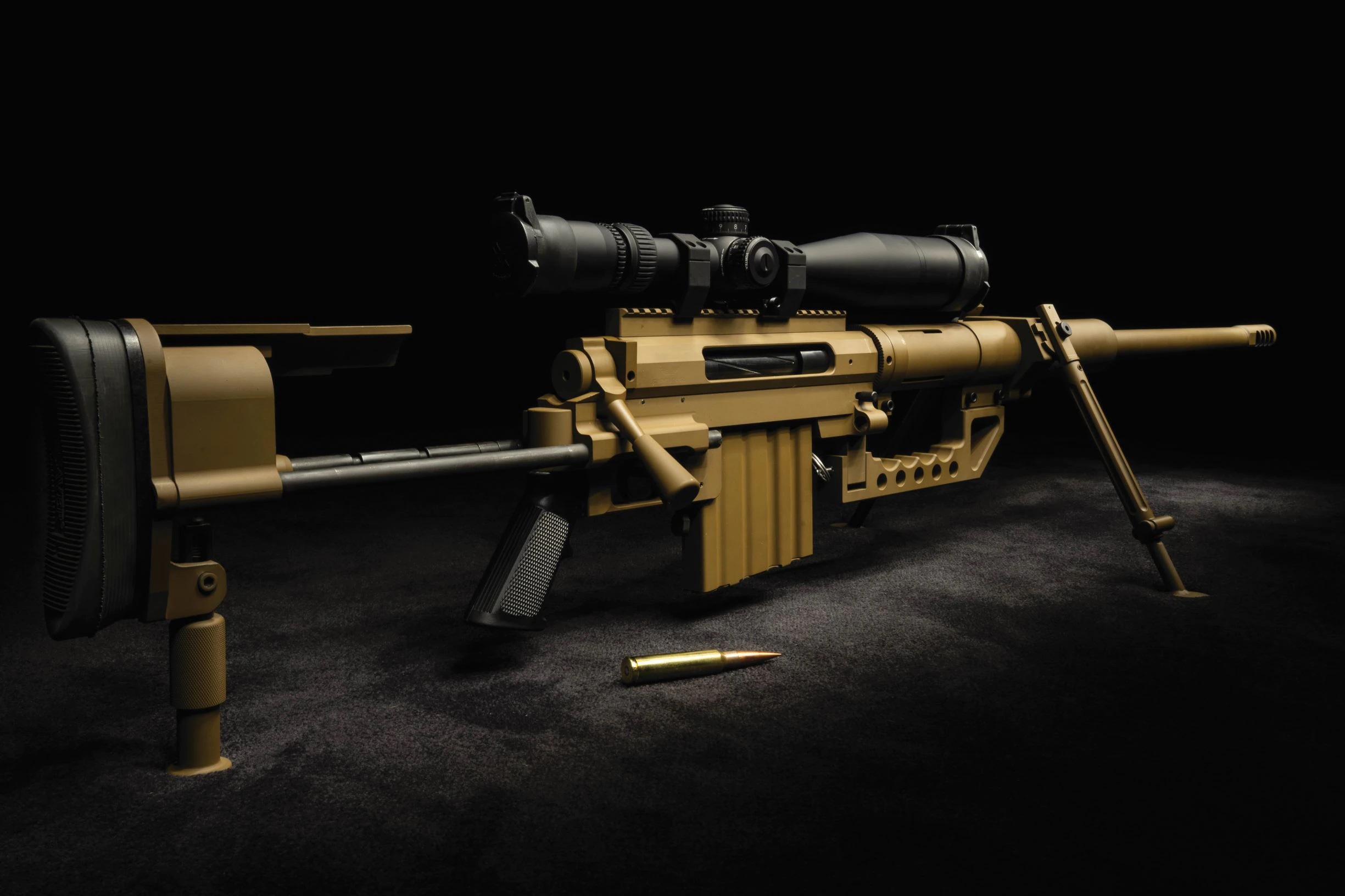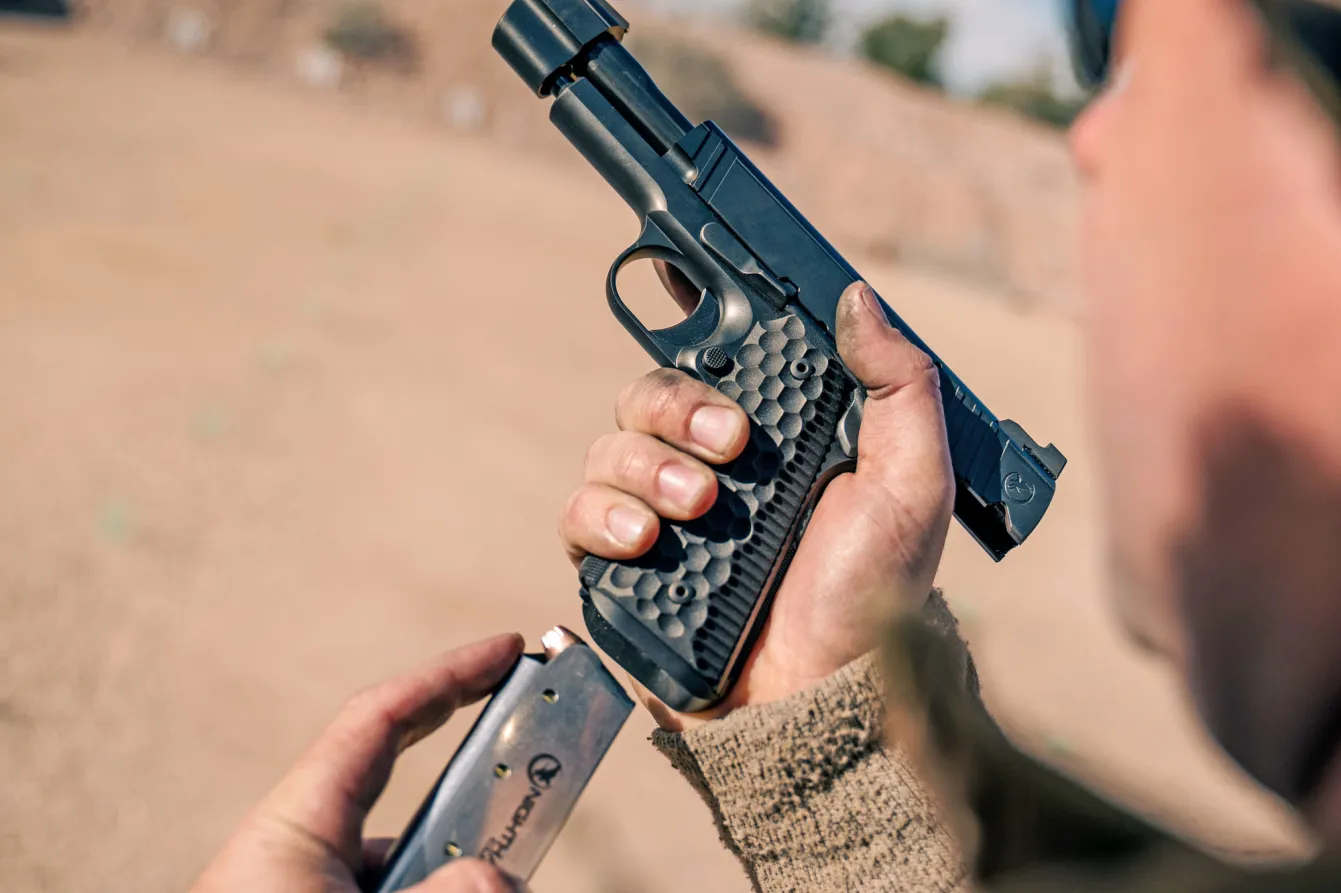Sniper rifles are among the most specialized and high-performance firearms in the world. Designed to provide exceptional accuracy and lethality at long ranges, these rifles are a critical component of modern military tactics and law enforcement operations. Snipers use these weapons to engage high-value targets from distances that ordinary rifles cannot reach, often with a degree of precision that can change the course of a battle or mission. In this article, we explore the history, design, use, and significance of sniper rifles.
1. What is a Sniper Rifle?
A sniper rifle is a firearm designed for long-range accuracy, typically with a high-powered scope and specialized features that enable precise targeting at extended distances. Unlike standard-issue rifles, sniper rifles are specifically tuned for pinpoint accuracy, allowing military or law enforcement personnel to eliminate targets from several hundred to over a thousand yards away.
Key characteristics of sniper rifles include:
- High Accuracy: Sniper rifles are built to be exceptionally accurate, often with precision-engineered barrels, carefully selected ammunition, and finely tuned triggers.
- Long-Range Capability: These rifles are capable of hitting targets at distances far beyond the reach of standard assault rifles or carbines, often in excess of 1,000 meters.
- Optical Scopes: Sniper rifles are typically equipped with high-magnification scopes, often with adjustable reticles to compensate for range, wind, and other environmental factors.
- Specialized Ammunition: Snipers often use specialized ammunition, including match-grade or high-ballistic coefficient rounds, to maximize their long-range effectiveness.
2. History of Sniper Rifles
The use of sniper rifles can be traced back to the 18th century, although the concept of long-range precision shooting evolved significantly in the 20th century. Here’s a look at the key developments in sniper rifle history:
- Early Use in War: The concept of a “sniper” dates back to the American Revolutionary War and the Napoleonic Wars, where skilled marksmen used rifled muskets to engage targets from a distance. However, it wasn’t until the 19th century, with the advent of rifling, that precision shooting began to take a more specialized form.
- World War I: The use of sniper rifles in modern warfare began to take shape during World War I. Both the Germans and the British developed scoped rifles, allowing marksmen to engage enemy soldiers from concealed positions. The German army, in particular, was known for its use of sharpshooters equipped with scoped Mauser rifles.
- World War II: The development of sniper rifles saw significant advances during World War II. The Soviet Union was one of the first to formally introduce sniper units, equipping soldiers with specially modified Mosin-Nagant rifles. The Germans also used the Karabiner 98k with scopes. The American military developed the Springfield M1903 and later the M1C Garand with scoped variants, which were used effectively in long-range engagements.
- Post-War Era: In the years following WWII, sniper rifles continued to evolve. The development of more powerful and accurate cartridges, such as the 7.62×51mm NATO and .338 Lapua Magnum, improved the performance of sniper rifles. During the Cold War, both NATO and Warsaw Pact nations refined their sniper programs, and specialized sniper rifles became integral to military operations.
- Modern Sniping: Today, sniper rifles are standard-issue for many military and law enforcement units around the world. Modern sniper rifles, like the U.S. Army’s M24, the British L115A3, and the Barrett M82, have pushed the boundaries of range and accuracy, with some models capable of hitting targets at over 1,500 meters with high precision.
3. How Do Sniper Rifles Work?
Sniper rifles rely on a variety of design features that enhance their accuracy over long distances. These include high-quality barrels, fine-tuned triggers, and optical sights that allow shooters to calculate and correct for environmental factors like wind, distance, and bullet drop. The operation of a sniper rifle can be broken down into several key components:
- Rifle Construction: Sniper rifles are typically constructed with heavy, precision-engineered barrels that reduce vibration and improve accuracy. The barrel is often free-floated (not in contact with the stock), further increasing precision.
- Ammunition: Snipers use high-quality, match-grade ammunition, often handloaded to ensure consistent performance. Specialized rounds, like the 7.62×51mm NATO, .300 Winchester Magnum, and .338 Lapua Magnum, are popular choices due to their ballistics and long-range performance.
- Optical Scopes: The most notable feature of sniper rifles is their high-powered scopes, which offer magnification and precision reticles. These scopes often include adjustable settings for range, windage, and elevation to help the shooter compensate for environmental factors and ensure accurate shots at extended ranges.
- Shooting Technique: Snipers rely on highly refined shooting techniques to ensure accuracy. They carefully calculate the range to the target, factor in wind speed and direction, and adjust their aim accordingly. Snipers often take their shots while in a prone or supported position to minimize movement and increase stability.
- Suppressors: Many sniper rifles are equipped with suppressors (silencers), which reduce the sound of the shot and help mask the shooter’s location. Suppressors also reduce recoil and muzzle flash, allowing snipers to remain concealed.
4. Types of Sniper Rifles
There are several different types of sniper rifles, each designed for specific purposes. The most common sniper rifle types are:
- Bolt-Action Sniper Rifles: These rifles are manually operated, with the shooter cycling the bolt to load a round, chamber it, and eject the spent cartridge. Bolt-action sniper rifles are known for their accuracy and reliability. Famous examples include the Remington 700 (used by the U.S. military as the M24) and the Accuracy International AWM (used by the British SAS).
- Semi-Automatic Sniper Rifles: These rifles allow for rapid follow-up shots, as the rifle automatically loads the next round after each shot. While slightly less accurate than bolt-action rifles, semi-automatic sniper rifles are still highly effective. The M110 SASS and the Barrett M82 are examples of semi-automatic sniper rifles used by military forces.
- Designated Marksman Rifles (DMRs): These rifles are similar to sniper rifles but are intended for use by infantry in support roles. DMRs typically have semi-automatic fire modes and are designed for engaging targets at medium to long ranges. The M14 and SR-25 are examples of DMRs.
- Anti-Materiel Rifles: These rifles are used for engaging vehicles, equipment, and other hard targets rather than personnel. They are chambered for large-caliber cartridges, such as the .50 BMG (Browning Machine Gun) round. The Barrett M82 is a well-known example of an anti-materiel sniper rifle.
5. Uses of Sniper Rifles
Sniper rifles are used in various fields, including military, law enforcement, and specialized civilian applications:
- Military: In modern warfare, sniper rifles are primarily used to eliminate high-value targets, such as enemy officers, machine gunners, or vehicles. They can also be used for reconnaissance, gathering intelligence, and harassing enemy forces from a distance. Sniper teams are often deployed to provide overwatch and to neutralize key threats without direct confrontation.
- Law Enforcement: In law enforcement, sniper rifles are used by tactical units such as SWAT for high-risk situations, such as hostage rescues or active shooter scenarios. They provide precision shots to incapacitate suspects from a distance, minimizing the risk to innocent bystanders.
- Civilian Use: Sniper rifles, or precision rifles, are also used by civilian marksmen in competitive shooting sports like long-range precision shooting. Some enthusiasts also use them for hunting, particularly for large game at extended distances.
6. Advantages and Disadvantages of Sniper Rifles
Advantages:
- Precision: Sniper rifles are designed for unmatched accuracy, capable of hitting targets at distances of over 1,000 meters with pinpoint precision.
- Long-Range Engagement: Snipers can engage targets far beyond the effective range of standard military or law enforcement rifles, providing a significant advantage in both offensive and defensive situations.
- Tactical Advantage: Snipers can neutralize high-value targets and provide valuable intelligence, often without being detected by the enemy.
Disadvantages:
- Limited Rate of Fire: The bolt-action design of many sniper rifles requires the shooter to manually cycle the action between shots, limiting the rate of fire compared to semi-automatic or automatic weapons.
- Specialized Skills: Effective sniping requires significant training and skill, including knowledge of ballistics, shooting techniques, and environmental factors.
- Size and Weight: Sniper rifles, particularly those with larger calibers, can be heavy and cumbersome, making them less suitable for close-quarters combat.
7. Conclusion
Sniper rifles are a critical component of modern warfare and law enforcement operations, offering unmatched precision and effectiveness at long ranges. Their ability to neutralize high-value targets from a distance, coupled with their versatility and specialized design, makes them essential tools for specialized military units, law enforcement agencies, and civilian marksmen.
The development of sniper rifles has come a long way from the early days of rifled muskets, and modern sniper rifles are finely tuned instruments of precision and power. As technology advances, so too will the capabilities of sniper rifles, further enhancing their role in military and law enforcement operations.



